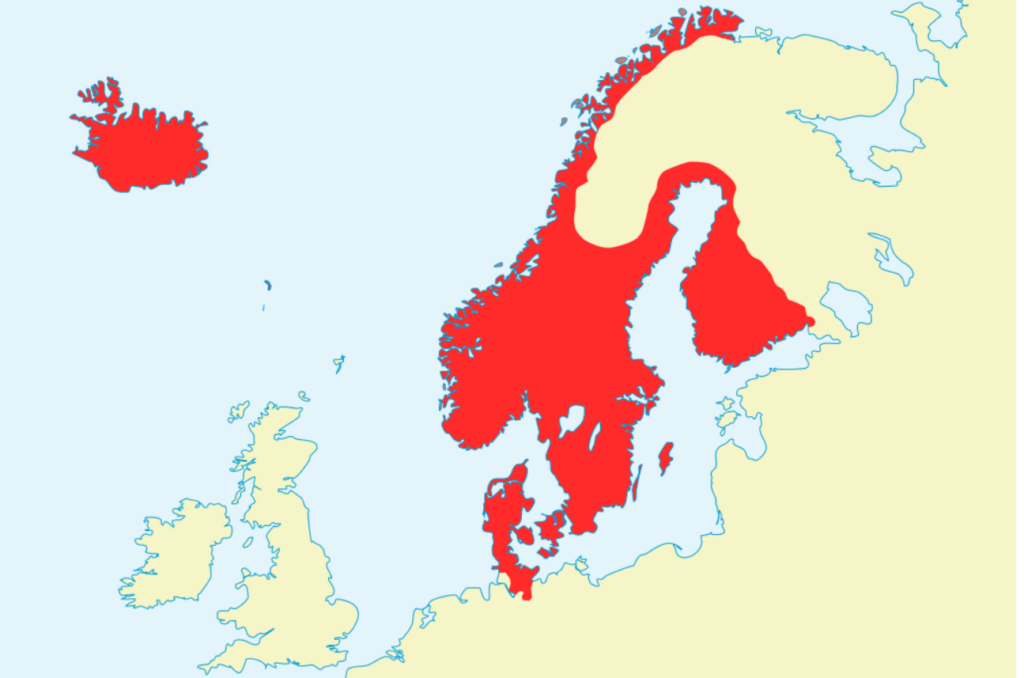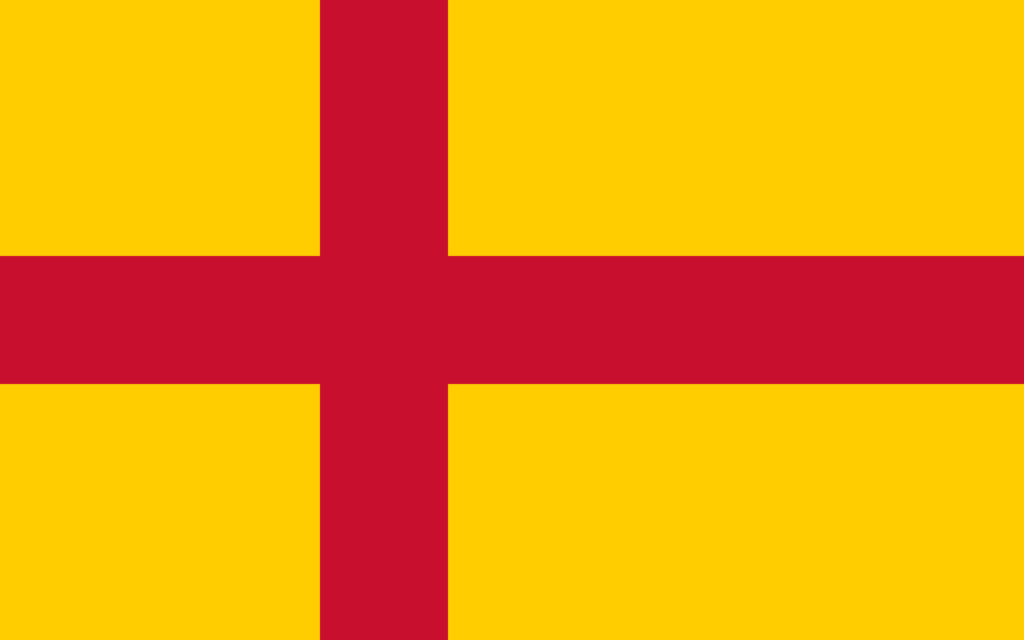Long before the European Union, there was the Kalmar Union. It was a grand experiment in middle-age Scandinavian diplomacy.
For over a century, three kingdoms – Denmark, Norway, and Sweden – were united under the same king, bound together by promises of peace and prosperity.
It was an era of both great potential and great peril. A time when national identities clashed with imperial ambitions, and where alliances were brought to their limits.
The Kalmar Union was more than just a political union. It was the bringing together of a region with a deep, shared history and intertwined cultures.
But as with all things in life, despite the best efforts of its rulers, its glory was not meant to last.

Scandinavia in the Early 14th Century
Before the Kalmar Union and throughout the 13th and early 14th centuries, Scandinavia was characterized by oft-occurring dynastic conflicts and political rivalries.
Close ties among the three kingdoms – Norway, Sweden, and Denmark – were not uncommon. Culturally they were quite similar. They shared histories, similar languages, and plenty of familial overlap.
In the early 1300s, Norway and Sweden entered into a confederation of monarchies. This created a lasting dynastic bond between the two countries.
Similarly, a confederation was formed in 1380 between Norway and Denmark when Olaf Håkonsson became king of Denmark.
However, the period between 1380 and 1395 was dominated by rivalry and warfare between the two dynasties that fought for dominance.
These political tensions eventually gave way to a new chapter in Scandinavian history, the Kalmar Union. This brought the three kingdoms together under a single monarch.
Queen Margaret I and Eric of Pomerania’s Coronation
One of the most pivotal moments in Scandinavian history came with Queen Margaret I’s adoption of her great-nephew, Eric of Pomerania, as her heir, in 1387.
Before this groundbreaking event, Queen Margaret I of Denmark, who was the daughter of Denmark’s King Valdemar IV, married King Haakon VI of Norway and Sweden.
Margaret played a pivotal role in ensuring her and Haakon’s son, Olaf, would be the heir to the Danish throne. In 1376, Olaf inherited the crown of Denmark from his maternal grandfather and became King Olaf II, with his mother as guardian.
When Haakon VI passed away in 1380, Olaf also inherited the crown of Norway. However, Olaf passed away in 1387, leaving Margaret without an heir. At this point, she adopted Eric as her own.
A few tumultuous years followed, but in 1389, Eric was crowned King of Norway. The three kingdoms of Denmark, Norway, and Sweden were brought even closer together.
To cement this union, Margaret summoned a congress of the three councils of state and other magnates to Kalmar in 1397. Eric was jointly elected king of all three kingdoms.
This personal union marked the foundation of the Kalmar Union.
Early Years of the Union
The early years of the Kalmar Union were marked by division and disagreement.
The proposed act of union faced opposition. Margaret I objected to all clauses that would preserve each country’s unique laws and customs.
There was a lot of back and forth between the three Rigsraads. Each country’s legislature/council was comprised of nobility. But no open rupture occurred, and the issue was largely avoided by subsequent monarchs.
Many scholars today believe the union was formed primarily as a means to block German expansion northward into the Baltics.
However, it ultimately wasn’t very successful. Ongoing conflict between the monarch and the Swedish and Danish nobility only led to infighting, rather than a unified front.
This conflict led to the Engelbrekt rebellion. This began in 1434 and it resulted in the overthrow of King Eric. The powerful and influential Swedish nobility and aristocracy sided with the rebels.
Many factors contributed to the rebellion, most notably domestic and foreign policies which required higher taxation. Financial challenges and general discontent with King Eric were also critical. It highlighted the myriad difficulties of creating and governing such a unified state.
Tensions and Conflicts
The Kalmar Union was fraught with tensions and conflicts throughout its history.
The death of the ruler Christopher of Bavaria in 1448, who had no heirs, marked the end of an uninterrupted period of Scandinavian union for the three kingdoms.
This led to a power struggle between Karl Knutsson Bonde, the Swedish king, and Christian of Oldenburg, who ruled over Denmark and Norway. The latter seized control of Sweden for the Danish crown for a short while from 1457 to 1464.
Sweden eventually returned to the control of Karl. The Danish kings repeatedly attempted to assert control over Sweden. However, they were consistently met with opposition from various Swedish nobles, including statesman Sten Sture and his son.
The tensions eventually reached a boiling point when the Danish King Christian II invaded Sweden with a large army in 1520. He killed its regent, Sten Sture the Younger. This directly led to the Stockholm Bloodbath in which Christian II executed Sture’s supporters en masse.
The Union also lost territory when Orkney and Shetland were annexed by the Kingdom of Scotland. This was after Christian I pledged them as security for his daughter’s dowry but failed to pay the required amount.
The picture painted by the history of the Kalmar Union is one of tension, fragility, and frankly, a union that wasn’t meant to last. It wouldn’t.
The Dissolution and End of the Kalmar Union
The downfall of the Kalmar Union began with the Stockholm Bloodbath. This marked a turning point in the history of the three Scandinavian kingdoms.
After the massacre, the nobleman Gustav Vasa organized a rebellion against King Christian II. He formed an alliance with Lübeck, the seat of the Germans’ Hanseatic League, which helped him conquer most of Sweden.

By 1523, it was all over. Vasa was crowned King of Sweden, effectively ending the Kalmar Union.
Although the Norwegian throne remained under Danish control, the Union’s power and influence were seriously diminished. Eventually, the Treaty of Stettin in 1570 saw Denmark renounce all claims to Sweden. This certified Sweden’s independence from the other Scandinavian kingdoms.
From the start, tensions and conflicts plagued the Kalmar Union and, ultimately, led to its downfall. Yet, they also paved the way for the emergence of modern Sweden, Norway, and Denmark as separate sovereign states, each with distinct identities and cultures.
References
Gustafsson, Harald. “The Forgotten Union.” Scandinavian Journal of History, vol. 42, no. 5, 2017, pp. 560–582., https://doi.org/10.1080/03468755.2017.1374028. Accessed 8 Apr. 2023.
Imsen, Steinar. “The Union Of Calmar —Nordic Great Power Or Northern German Outpost?” Politics and Reformations: Communities, Polities, Nations, and Empires, Brill, 2007, pp. 471–489.
“Kalmar Union.” Encyclopædia Britannica, Encyclopædia Britannica, Inc., https://www.britannica.com/place/Kalmar-Union.

